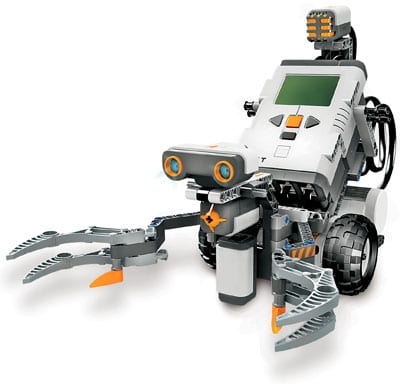I would like everyone to enjoy the video KeepOn. The “KeepOn” robot was created in 2007 and is a great example of how far technology has come. The Scientist shows complexity while using simple two yellow balls.
Robotics have always been said to be the next generation. Every generation we get more and more advanced on how we can navigate and control robots to do humanistic tasks. Most of robotic technology comes from area 51, which is a top secret confidential no fly zone in the United States. Top scientists and of course top technology comes from there. The world today has shaped itself around technology and re-developing the technology that has already been in place.
The United States Military has used many robots in war and from research it is relying on more and more robots to do special operation missions. For one example we have the Predator drone which was created in 1996. The Predator flies all over the world while being controlled from South California and is able to go and launch missiles where needed. It is also equipped with state of the art optics in order to provide clear cut footage for the operator. In 1996 the United States had only 200 drones and as of 2009 that number is now 7000 drones. The Predator has over a million flying hours and is heavily relied on to save our soldiers lives. Another great example would be the PackBot which has many uses. Also equipped with state of the art optics, it has been used to look for bodies at ground zero and for mines in Iraq and Afghanistan. The PackBot has done many spying work as well, often going into caves and hiding spots of insurgents.
Creators and buyers of Robots want the robot they buy to be as human as possible and react to touch, feeling, sound, and commands. Many of the top ten robots of the past ten 15 years have succeeded in becoming what their buyers want them to be. One favorite of mine was developed here in Boston, called the BigDog. This robot is the most advanced rough terrain robot on the earth today. Originally created in 2005 it has put viewers in shock.
While getting to program a lego robot of my own, I was quickly able to see how important they are to us in the world. While seeing how we can control the robot and the many things we can make it do within minutes, it was impressive. We started to calculate in order to find the percentage of human error while measuring. We used the formula
(measurement w/ruler – program measurement)/(measurement + measurement program/2)
We found that we were off by 1.13% due to human error while measuring. A percentage of 1.13 is acceptable and certainly great but not as accurate as what the robot had computed. Their are many issues we can face that the computer will most likely not face while computing measurements and or coordinates. For one, the measuring the device a person can use may be off, we had used a ruler. Perhaps we were not consistent with our markings. Another factor is that the robot had many loose wiring on it, and as humans it is hard to account for that. Their is always human error or perhaps marginal error and therefore an error of 0% would be impossible to have.
computing measurements and or coordinates. For one, the measuring the device a person can use may be off, we had used a ruler. Perhaps we were not consistent with our markings. Another factor is that the robot had many loose wiring on it, and as humans it is hard to account for that. Their is always human error or perhaps marginal error and therefore an error of 0% would be impossible to have.

 planned cool shutdown for maintenance and the other four were just de-fueled. As the tsunami hit, it damaged the connection between the reactors and the power grid. With flooding and havoc raised by the earth quake and tsunami combination there was massive flooding; so as the reactors began to overheat, the workers could not get any external help in effort to keep the reactors cool. As days went on the workers struggled to cool and shut down the reactors but reactors 1,2 and 3 experienced a full meltdown. During these long stressful scary days their were several hydrogen explosions. In an effort to save nearby citizens the government commanded that seawater be used to cool the reactors. Seawater was dangerous because it could ruin the reactors.
planned cool shutdown for maintenance and the other four were just de-fueled. As the tsunami hit, it damaged the connection between the reactors and the power grid. With flooding and havoc raised by the earth quake and tsunami combination there was massive flooding; so as the reactors began to overheat, the workers could not get any external help in effort to keep the reactors cool. As days went on the workers struggled to cool and shut down the reactors but reactors 1,2 and 3 experienced a full meltdown. During these long stressful scary days their were several hydrogen explosions. In an effort to save nearby citizens the government commanded that seawater be used to cool the reactors. Seawater was dangerous because it could ruin the reactors. workers remained working on the reactors to keep them cool. Many were exposed to radiation and were temporarily evacuated. After long days of work and fear of dying due to radiation exposure or hydrogen explosions, the workers sought relief when electrical power was restored. This allowed for automated cooling of the reactors.
workers remained working on the reactors to keep them cool. Many were exposed to radiation and were temporarily evacuated. After long days of work and fear of dying due to radiation exposure or hydrogen explosions, the workers sought relief when electrical power was restored. This allowed for automated cooling of the reactors.